Frankenstein The True Story
Written by Matteo Sedazzari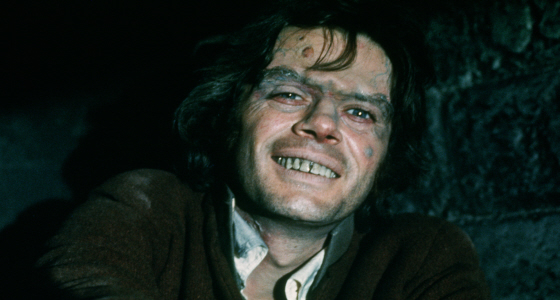
© Words Matteo Sedazzari
Frankenstein The True Story made in 1973, directed by Jack Smight, a veteran of TV movies and shows (The Alfred Hitchcock Hour, Arrest and Trial, The Sound of Miles Davis) and cinema (The Illustrated Man, Kaleidoscope ,The Third Day). Much of Smight’s work is focused on the psychology of the central actors, and how circumstances affected their actions and decisions. This is certainly the case with Frankenstein The True Story, made for TV, yet with such picturesque settings, dramatic sound track and strong performances, Frankenstein The True Story could easily have been released for the cinema.
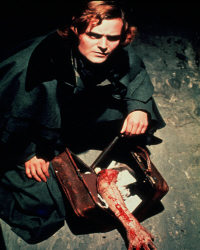 At the time of making (1973) the Universal franchise of Frankenstein was still popular and being aired on late night TV even though they had stopped in 1948 with Abbott and Costello Meet Frankenstein. Well-liked films with iconic status, due to the original Universal’s Frankenstein (1931) directed by James Whale (The Old Dark House, The Invisible Man, Wives Under Suspicion) starring Colin Clive (Journey's End, Jane Eyre, Mad Love) as Henry Frankenstein (no reason why he is called Henry, as in the novel and other productions he is Victor) and Boris Karloff (Tower of London, The Body Snatcher, The Black Cat) as The Monster. Moreover it was makeup of the monster (a role Karloff will play a further three times, Bride of Frankenstein, Son of Frankenstein, before Glenn Strange took over for the remaining Frankenstein Universal films) created by Jack Pierce, a flat top head with dark scruffy hair, with bolts in the neck and heavy scarring across the forehead, droopy eyelids and sunken cheek bones that made the film a huge success and even today Pierce’s original makeup is still associated with Frankenstein. Coupled with The Hammer Films of Frankenstein, a franchise that made Peter Cushing (Violent Playground ,Dracula, The House That Dripped Blood) a star as Baron Victor Frankenstein, and Hammer films in 1973, were still making Frankenstein films with their final film Frankenstein, The Monster from Hell made in 1974. The creators of Frankenstein The True Story had to be original in their production and change the public’s interpretation of Frankenstein the creator and the monster.
At the time of making (1973) the Universal franchise of Frankenstein was still popular and being aired on late night TV even though they had stopped in 1948 with Abbott and Costello Meet Frankenstein. Well-liked films with iconic status, due to the original Universal’s Frankenstein (1931) directed by James Whale (The Old Dark House, The Invisible Man, Wives Under Suspicion) starring Colin Clive (Journey's End, Jane Eyre, Mad Love) as Henry Frankenstein (no reason why he is called Henry, as in the novel and other productions he is Victor) and Boris Karloff (Tower of London, The Body Snatcher, The Black Cat) as The Monster. Moreover it was makeup of the monster (a role Karloff will play a further three times, Bride of Frankenstein, Son of Frankenstein, before Glenn Strange took over for the remaining Frankenstein Universal films) created by Jack Pierce, a flat top head with dark scruffy hair, with bolts in the neck and heavy scarring across the forehead, droopy eyelids and sunken cheek bones that made the film a huge success and even today Pierce’s original makeup is still associated with Frankenstein. Coupled with The Hammer Films of Frankenstein, a franchise that made Peter Cushing (Violent Playground ,Dracula, The House That Dripped Blood) a star as Baron Victor Frankenstein, and Hammer films in 1973, were still making Frankenstein films with their final film Frankenstein, The Monster from Hell made in 1974. The creators of Frankenstein The True Story had to be original in their production and change the public’s interpretation of Frankenstein the creator and the monster.
Writers Christopher Isherwood (The Ascent of F6 , Cabaret (stories), A Single Man (based on his novel) and Don Bachardy (Frankenstein The True Story being his only screenplay) decided not to match or imitate Universal or Hammer, but instead opted to produce a script that was more faithful to the original novel by Mary Shelley (first published in 1818) with a huge emphasis on science versus God, coupled with positive yet naive ideology which concludes with decay and death. 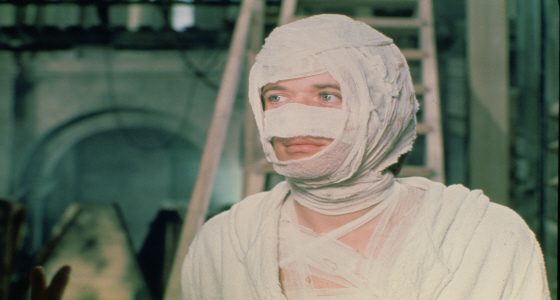
I am sure everyone knows the synopsis of Frankenstein, Victor Frankenstein a brilliant and somewhat wayward scientist in the 19th Century, who believes and does bring a man to life, via electricity in the form of lightning bolts. Due to Universal’s first feature when the bolts strike a conductor and the creature moves, and Clive as Frankenstein cries “Look! It's moving. It's alive. It's alive... It's alive, it's moving, it's alive, it's alive, it's alive, it's alive, IT'S ALIVE!” lightning has always been synonymous with the birth of the creature. In addition Frankenstein The True Story does pay homage to the importance of lightning as it does in the novel and Universal just make it iconic for 20th Century and beyond. Furthermore, the man created by Frankenstein made up of different body parts, becomes a monster capable of destruction and murder. A very common saying today “I have created a monster”, which is a reference to Frankenstein, by producing something with good intent, however the results are disastrous. 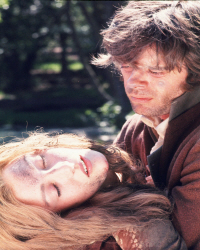 Victor Frankenstein (Leonard Whiting; Romeo and Juliet, The Royal Hunt of the Sun) in Frankenstein The True Story is an ideologist and caring man, shattered by the death of his brother and a chance meeting with Dr. Henri Clerval (David McCallum; Colditz, The Great Escape, Sapphire & Steel) his eyes are opened by Clerval that man can create life via science, the philosophy becomes an obsession. During the process of creating their man, (made up of men hanged) Clerval is murdered by his own creation, a living arm. Frankenstein believes and chooses his former friend’s brain as the pièce de résistance. In turn the creature is born, and unlike Universal or Hammer, the creature (Michael Sarrazin; They Shoot Horses, Don't They? Harry in Your Pocket, The Gumball Rally ) is a handsome man with deep soul searching brown eyes. Frankenstein believes his has overcome death, and man can create life not via reproduction. It couldn’t be further from the truth, as the man starts to decay, and slowly becomes a monster, and with that the nightmare begins.
Victor Frankenstein (Leonard Whiting; Romeo and Juliet, The Royal Hunt of the Sun) in Frankenstein The True Story is an ideologist and caring man, shattered by the death of his brother and a chance meeting with Dr. Henri Clerval (David McCallum; Colditz, The Great Escape, Sapphire & Steel) his eyes are opened by Clerval that man can create life via science, the philosophy becomes an obsession. During the process of creating their man, (made up of men hanged) Clerval is murdered by his own creation, a living arm. Frankenstein believes and chooses his former friend’s brain as the pièce de résistance. In turn the creature is born, and unlike Universal or Hammer, the creature (Michael Sarrazin; They Shoot Horses, Don't They? Harry in Your Pocket, The Gumball Rally ) is a handsome man with deep soul searching brown eyes. Frankenstein believes his has overcome death, and man can create life not via reproduction. It couldn’t be further from the truth, as the man starts to decay, and slowly becomes a monster, and with that the nightmare begins.
Frankenstein The True Story delivers an in depth portrayal of the famous story, with a strong cast, and in 1973 Whiting and Sarrazin were rising stars, whilst McCallum was known to millions across the world as the Russian spy Illya Kuryakin from the sixties smash The Man from U.N.C.L.E., a show adored by millions of kids. So there is a strong feeling of youth and optimism in the main cast, as well as beauty with Nicola Pagett (Upstairs, Downstairs, Anna Karenina, Anne of the Thousand Days) as Elizabeth Fanschawe, Frankenstein’s fiancé and Jane Seymour (Live and Let Die, The Onedin Line ,Dr. Quinn, Medicine Woman) as Agatha / Prima. Even though the creators of Frankenstein The True Story wanted to present what was at the time, the most accurate interpretation of the story, an interesting sub plot develops where Agatha (daughter of the blind man that the monster befriends in the woods, as the blind man can’t see his ugly features he doesn’t fear the monster) is murdered by the creature and Frankenstein, along with Dr. John Polidori, use the body to create a woman, not as a mate for the creature (as in the Universal sequel Bride of Frankenstein, 1935) but as a more successful result from their insane experiments. Agatha becomes Prima, beautiful but sinister and deadly, as demonstrated when she tries to strangle the family cat only to be stopped by Elizabeth. 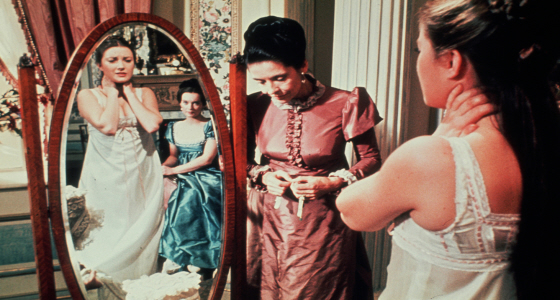
Dr. John Polidori doesn’t appear in the original book, however, his name based on John William Polidori, a friend of author Mary Shelley, is seen by many as the creator of the vampire genre fiction, with The Vampyre, (1819). Polidori is an evil man of science who knows how to manipulate and control people, and a master of hypnosis, who originally contrived to give life with lightning bolts, only for his idea to be stolen by Clerval. In the film the character of Dr. John Polidori is a pure pantomime villain and wonderfully played by cinema legend James Mason (Georgy Girl, The Pumpkin Eater, Lolita). With such a talented cast and an absorbing storyline, any fan of gothic novels or horror films will enjoy Frankenstein The True Story, over three hours in duration, yet like the original airing in 1973, it is split into two parts. An engaging and intelligent film, that certainly deserves to be seen. A modern classic, as it goes beyond the basic horror genre, it studies human desires, and you cannot help thinking that the writers subconsciously were listening to The Rolling Stones “You Can't Always Get What You Want”, because that song certainly is the essence of Frankenstein The True Story.
Frankenstein The True Story Available Now - Please Click on the Image Below 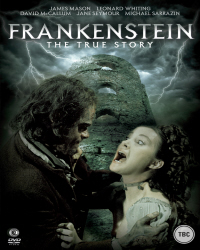
Matteo Sedazzari
Latest from Matteo Sedazzari








